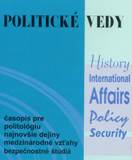„Politika ochrany“: reformulácia konceptuálneho rámca reakcie OSN na ohrozenia mieru a bezpečnosti
„Policy of Protection“: Conceptual Frame of the UN Reaction to the Threat to Peace and Security Revised
Author(s): Júlia Raticová, Dominika Kaščáková Subject(s): Politics / Political Sciences
Published by: Univerzita Mateja Bela
Keywords: politics of protection; protection of civilians; responsibility to protect; humanitarian intervention; Security Council; United Nations; peace operations
Summary/Abstract: In the course of decades, the UN Security Council efforts to maintain international peace and security in form of peacekeeping operations have evolved from impartial, relatively narrow and politically uncontroversial mandates based on consent of all parties to conflict towards more proactive, partisan and broader agendas of protecting civilian populations in armed conflict. Such shift requires not only improvements in field performance, but also building broader and deeper consensus on when and under what circumstances the protection of civilians should be carried out by the international community as a condition sine qua non adequate mandates for practical implementation of these tasks. During the last decade and half we have witnessed that the approach of the UN Security Council in dealing with the acts of breaches of peace or security has been increasingly built on the issue of civilian protection, complemented from the mid-2000 by the doctrine of Responsibility to Protect. Protection of civilians, stemming from the concept of human security, represents a broad agenda of protection of civilian populations during armed conflict, going beyond immediate issue of protection from mass atrocities. The R2P doctrine, in an attempt to foster a global political consensus on the question how to confront situations of mass atrocities against civilian populations, committed presumably by their own states and governments, asserts the primary responsibility of a government to protect its population from genocide, war crimes, crimes against humanity and ethnic cleansing; if unable or unwilling to do so, the international community has responsibility to act, amounting to temporary suspension of sovereignty of the state in question. The aim of this article is to outline the intersection between the politics of protection of civilians, as elaborated by the UN from 1990s onwards, and the R2P, as adopted by the UN General Assembly in 2005, and how they might influence the UN response to contemporary crises. We maintain that the protection of civilians represents an important pillar of the current approach of the UN Security Council in framing issues of international peace and security debate, and in connection with the R2P doctrine it decisively conditions much of the current security discourse in the UN Security Council despite the fact that unresolved questions, differences and tensions persist as to the practical application of both these norms.
Journal: Politické vedy
- Issue Year: 15/2012
- Issue No: 1
- Page Range: 105-130
- Page Count: 26
- Language: Slovak

